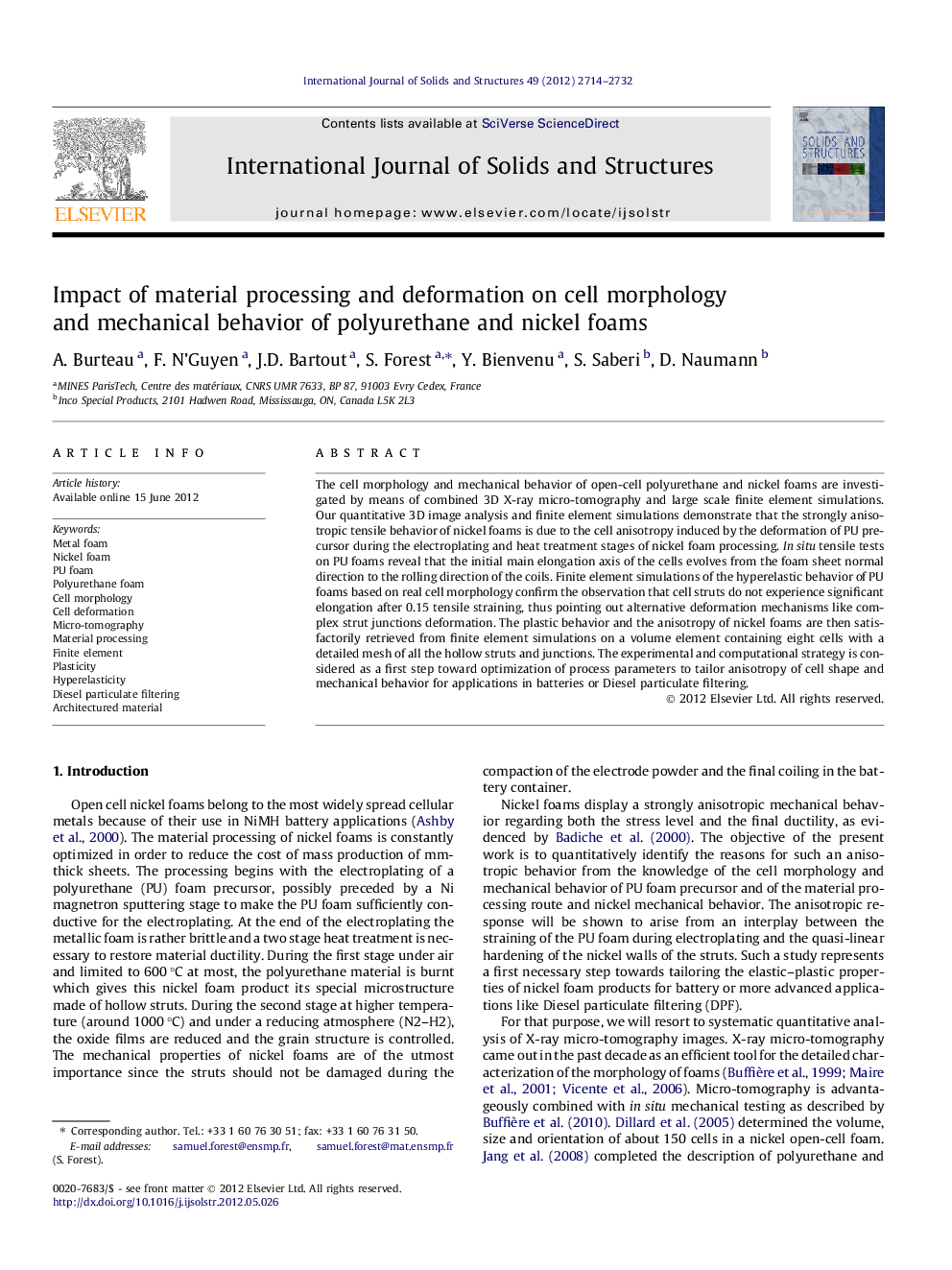| Article ID | Journal | Published Year | Pages | File Type |
|---|---|---|---|---|
| 6749453 | International Journal of Solids and Structures | 2012 | 19 Pages |
Abstract
The cell morphology and mechanical behavior of open-cell polyurethane and nickel foams are investigated by means of combined 3D X-ray micro-tomography and large scale finite element simulations. Our quantitative 3D image analysis and finite element simulations demonstrate that the strongly anisotropic tensile behavior of nickel foams is due to the cell anisotropy induced by the deformation of PU precursor during the electroplating and heat treatment stages of nickel foam processing. In situ tensile tests on PU foams reveal that the initial main elongation axis of the cells evolves from the foam sheet normal direction to the rolling direction of the coils. Finite element simulations of the hyperelastic behavior of PU foams based on real cell morphology confirm the observation that cell struts do not experience significant elongation after 0.15 tensile straining, thus pointing out alternative deformation mechanisms like complex strut junctions deformation. The plastic behavior and the anisotropy of nickel foams are then satisfactorily retrieved from finite element simulations on a volume element containing eight cells with a detailed mesh of all the hollow struts and junctions. The experimental and computational strategy is considered as a first step toward optimization of process parameters to tailor anisotropy of cell shape and mechanical behavior for applications in batteries or Diesel particulate filtering.
Keywords
Related Topics
Physical Sciences and Engineering
Engineering
Civil and Structural Engineering
Authors
A. Burteau, F. N'Guyen, J.D. Bartout, S. Forest, Y. Bienvenu, S. Saberi, D. Naumann,
